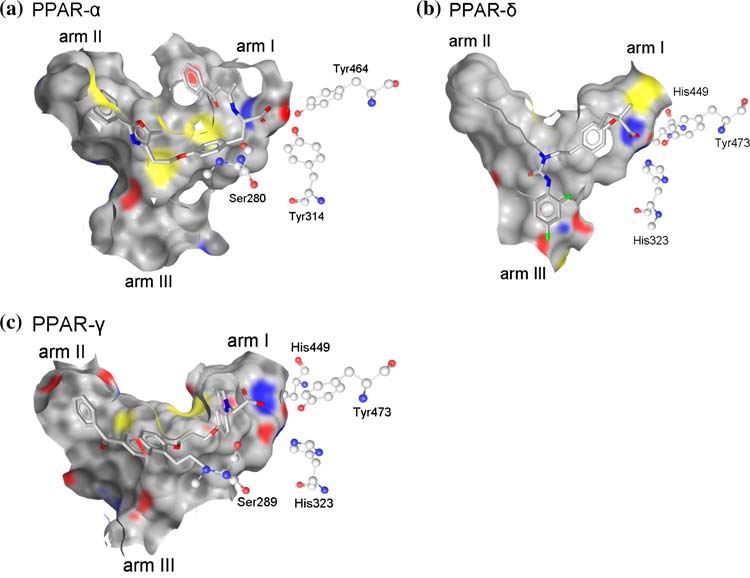Peroxisome proliferator-activated receptors (PPARs) are ligand-activated transcription factors of nuclear receptor superfamily comprising of the following three subtypes: PPARα, PPARγ, and PPARβ/δ. The involvement of PPARs in the regulation of cancer cell proliferation, differentiation and apoptosis, and their potential as pharmacological targets, have been studied extensively. Creative Biolabs has focused on the development of computational pharmacology services for many years and has established excellent platforms for drug development. We provide a variety of nuclear receptors modeling services to meet the diverse needs of our customers.
PPAR is a Double-Edged Sword in Cancer Therapy. PPARα stimulation appears to inhibit the proliferation of human colon cancer cell lines and to reduce poly formation in the mouse model of familial adenomatous. PPARβ/δ in epithelial homeostasis has been described including the regulation of keratinocyte differentiation, apoptosis and cell proliferation, inflammation, and wound healing. PPARγ not only controls the expression of genes involved in differentiation but also negatively regulates the cell cycle. Thiazolidinediones (TZDs) are the most widely studied PPAR-γ ligands. TZDs induce the tumor suppressor gene PTEN, which also contributes to their antiproliferative activity. PPARγ activation inhibits the proliferation of malignant cells, including those derived from liposarcoma, breast adenocarcinoma, prostate carcinoma, colorectal carcinoma, non-small-cell lung carcinoma, pancreatic carcinoma, bladder cancer, gastric carcinoma, and glial tumors of the brain.
The functional domains of PPARs are N-terminal, DNA-binding (DBD) and ligand-binding (LBD). The DNA-binding domain of the three PPAR subtypes is highly conserved, whereas the ligand-binding domains differ significantly. To regulate the expression of genes, they interact with DNA-responsive elements that include hexanucleotide sequence AGGTCA repeats within promotor regions of the target genes after heterodimerization with 9-cis retinoic acid receptors (RXRs). When no ligand is present, corepressor complexes are recruited which inhibit transcription. Agonists that bind to PPARs lead to the recruitment of coactivator proteins that activate transcription. In addition, PPARs block activities of signal-dependent transcription factors, such as NF-κB and activator protein 1 which also represses gene transcription.
 Fig.1 The ligand-binding pockets of the three PPAR subtypes.
Fig.1 The ligand-binding pockets of the three PPAR subtypes.
The intervention of PPARs can provide therapeutic targets for cancer. It is therefore important to identify synthetic compounds that mimic the PPARs ligand activity, and to develop synthetic compounds that selectively modulate the pharmacology of PPARs in a cell-type and/or tissue-selective manner to exert the desired therapeutic effects. Structure-based methods have been employed to understand the structural basis for recognition and specificity among interacting partners that are required for precise regulation of transcriptional activities of PPARs. We can provide a variety of structure-based nuclear receptors modeling approaches to meet customers’ specific requirements.
Creative Biolabs has focused on the development of computational pharmacology for years. At present, we offer high-quality nuclear receptors modeling services to best suit your technical, program and budget requirements which can greatly assist your research, pre-clinical development and clinical trials in animals. We are always assisting our clients with the most satisfactory data for your projects. If you are interested in our services, please contact us for more details.
All listed services and products are For Research Use Only. Do Not use in any diagnostic or therapeutic applications.